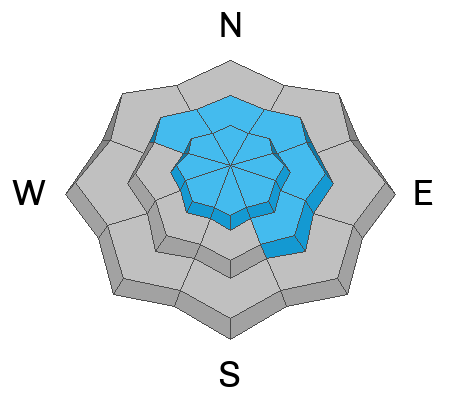Forecast for the Ogden Area Mountains

Issued by Nikki Champion on
Thursday morning, December 7, 2023
Thursday morning, December 7, 2023
Avalanche danger is MODERATE on steep upper-elevation slopes facing west through north to east. Human-triggered avalanches may break 2-4 feet deep and span several hundred feet wide, failing on a persistent weak layer of faceted snow. There is a LOW danger on the remaining slopes.
The north-facing slopes harboring old, weak faceted snow surfaces are not to be messed with. Evaluate snow and terrain carefully.

Low
Moderate
Considerable
High
Extreme
Learn how to read the forecast here










